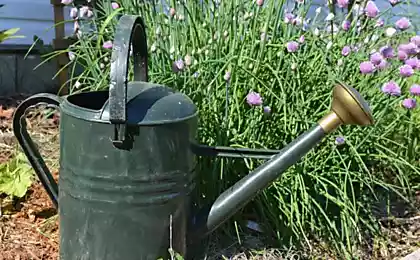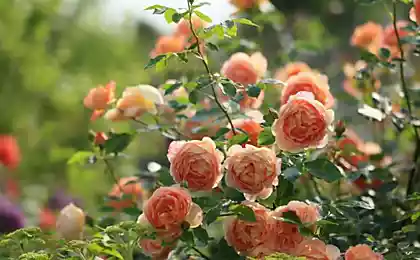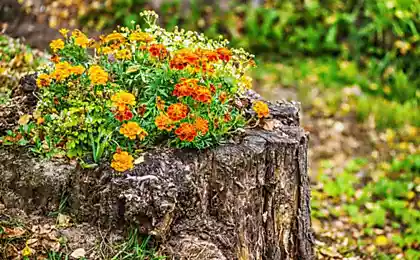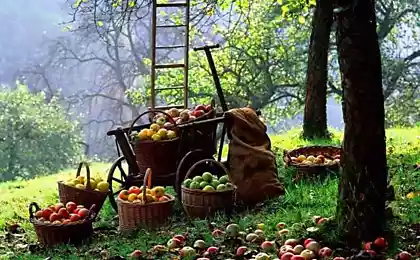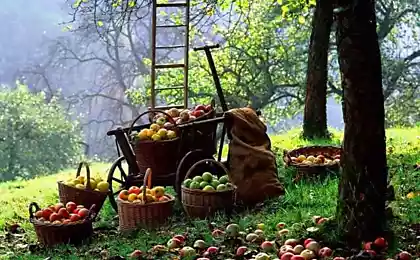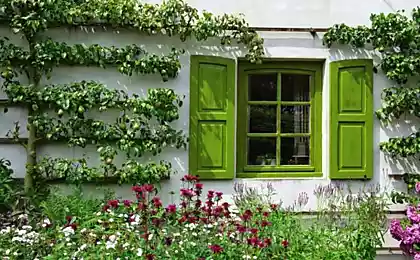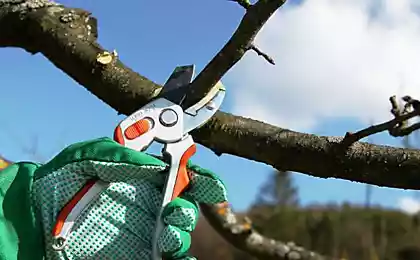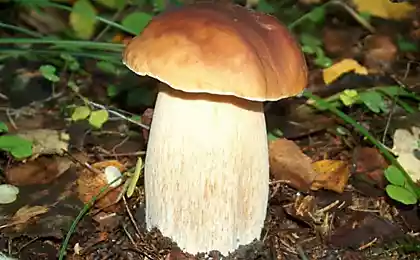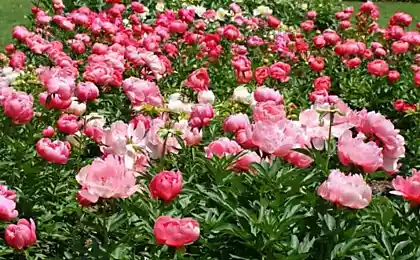465
The secrets of growing Jasmine in your garden
Elegant, richly blooming Jasmine bushes are very nice in the garden. White Terry or simple shaped flowers exude a delicate scent of strawberries, especially in the evening after sunset. Jasmine pleases with flowering for two months — June and July. Of the many varieties you can pick up the taste any. For hedges perfect low-growing, up to one and a half meters bushes. But as a solitaire will look good shrubs to a height of two to three meters. The cultivation of Jasmine will bring a lot of trouble. The shrub grows quickly, has no special requirements for soil, semi-shade, tolerates winter frosts and does not hurt if you are transferring from one place to another.
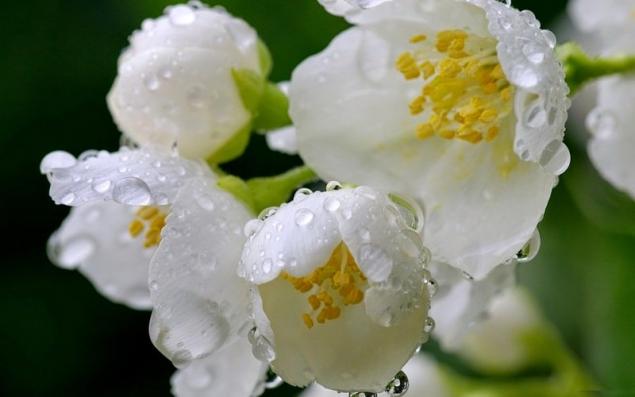
Pick-up time
Put Jasmine in the spring in may or in the fall in September. However, the shrubs planted in the spring, take root better. Planting is best done in the evening in cloudy weather.
Landing
When selecting a location for the Jasmine, it must be remembered that the shrub grows and blooms in one place for at least 10 years.
Jasmine tolerates shade. However, the shrubs planted in the open field on the Sunny side will bloom longer and more prolifically.
It is undesirable to plant the Jasmine in areas with high groundwater tables and water stagnation.
Soil
Jasmine undemanding to the ground, where you will grow, definitely preferring fertile soils.
Planting hole is prepared several days before planting. Digging a hole in the form of a cylinder with a depth of 0.5-0.7 m and diameter 0.6 m. the Bottom is loosened and, if necessary, make drainage from the gravel and sand layer 15-20 cm Pit to leave for a few days to make sure she is warmed by the sun.
For planting prepare fertile soil of humus, ash and black soil in following proportion: 1 bucket of compost add 1 kg of ash and topsoil.
When planting several bushes at the same time focus on the size of the plant in the adult form. The interval between the planting pits in this case varies from 0.5 (for single row live hedge), 1.5 m (for the large shrubs, planted in the group).
Landing
In the landing pit poured a mound of fertile pre-prepared mixture. The roots of the seedling are well inspected for damage or disease by cutting discarded and gently spread over the mound, holding tightly to the earth.
When placing the seedling in the planting hole ensure that the root collar was located at the level of the earth or was buried, but not more than 3 cm, because at a deep position, it can easily rot. The plant is covered with soil, tamped and watered liberally (on one Bush spend 2-3 buckets). For the best conservation of moisture mulching tree trunks dry peat, humus or pine needles with a layer of 3-4 cm After planting shape the Bush by trimming the branches growing inside.
The key to good growth and lush flowering Jasmine copious watering, annual fertilization, regular loosening of the soil and annual pruning of the bushes.
Watering
Jasmine bushes of dank. Prolonged lack of moisture the leaves quickly lose their turgor, which is restored only after rains or heavy watering.
Jasmine bushes are usually not enough rainwater. Before flowering it is desirable to conduct at least two copious irrigation. During flowering and after it is important to ensure that the soil around the Bush does not dry up.
When watering for 1 sq. m of tree trunks round consume up to 30 litres of water.
Fertilizer
To Jasmine every year, lush and blooming profusely, it needs regular feeding.
Every spring fertilize the Bush with a bucket diluted in a ratio of 1:10 slurry. Two years after planting in addition to the slurry is added mineral fertilizers. In mid-may contribute 15 g of urea, 15 g of potassium sulfate and 30 g of superphosphate, dissolved in 10 l of water. And after flowering, for a good laying buds for next year, make a 100-150 g of wood ash per 1 sq m of round tree trunks.
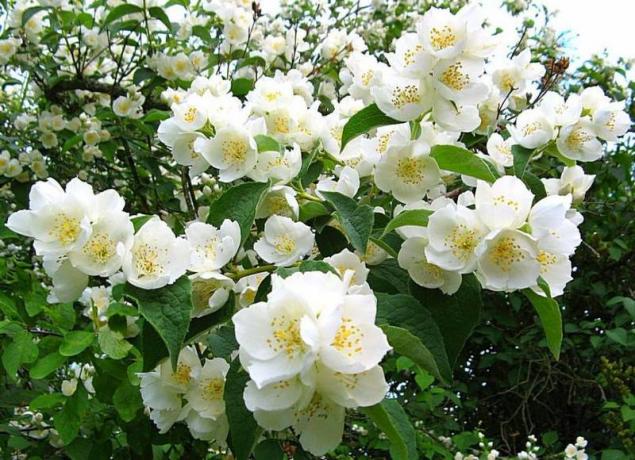
Loosening the soil
Over the summer, you need to spend 3-4 loosening soil. The ground around the Bush loosened to a depth of 5-8 cm while loosening carefully remove all the weeds. After tree trunks mulch peat, dry earth or pine needles.
Pruning
Most varieties of Jasmine (especially vigorous) grow unevenly and one-sidedly. To give the Bush an attractive form will help annual cropping. This should be done very carefully, because badly cropped Bush will bloom only after a year.
At the end of April — early may lightly prune the strongest branch. During the summer they produce large quantities of young shoots.
Jasmine flowers bloom on shoots of the second year, therefore, the sanitary pruning of the plants produced only after flowering. Weak and diseased branches are cut completely, stimulating the growth of annual shoots. At the same time cut shade, growing inside the Bush shoots. In addition to pruning immediately after flowering is carried out the removal of withered blossoms.
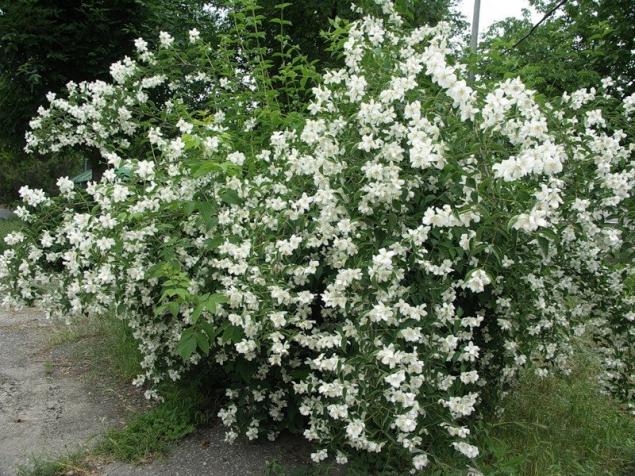
Once in three or four years, conduct a “upgrade” of the Bush, removing old stems. Such pruning provokes good growth and abundant flowering of young plants. Very old bushes of Jasmine is subjected to a rejuvenating pruning. At the beginning of may 3-4 the healthy trunk of the Bush pruned to 30-40 see the Other cut down to the ground. Slices processed garden pitch, and the ground around the Bush fertilize with compost. During the summer, the shrub abundantly watered and fertilize infusion of mullein. In autumn from dormant buds will grow a large number of powerful young shoots. The following spring they are almost all cut to the ground, leaving the three strongest, which will become the Foundation of the young Bush.
Preparing for winter
Most varieties of Jasmine do not require shelter for the winter. Even if the ends of annual shoots freeze slightly during the harsh winter, after spring pruning, the plant quickly regains the crown and the ability to bloom. published
P. S. And remember, just changing your mind — together we change the world! ©
Source: vk.com/dacha.life?w=wall-83256656_35368

Pick-up time
Put Jasmine in the spring in may or in the fall in September. However, the shrubs planted in the spring, take root better. Planting is best done in the evening in cloudy weather.
Landing
When selecting a location for the Jasmine, it must be remembered that the shrub grows and blooms in one place for at least 10 years.
Jasmine tolerates shade. However, the shrubs planted in the open field on the Sunny side will bloom longer and more prolifically.
It is undesirable to plant the Jasmine in areas with high groundwater tables and water stagnation.
Soil
Jasmine undemanding to the ground, where you will grow, definitely preferring fertile soils.
Planting hole is prepared several days before planting. Digging a hole in the form of a cylinder with a depth of 0.5-0.7 m and diameter 0.6 m. the Bottom is loosened and, if necessary, make drainage from the gravel and sand layer 15-20 cm Pit to leave for a few days to make sure she is warmed by the sun.
For planting prepare fertile soil of humus, ash and black soil in following proportion: 1 bucket of compost add 1 kg of ash and topsoil.
When planting several bushes at the same time focus on the size of the plant in the adult form. The interval between the planting pits in this case varies from 0.5 (for single row live hedge), 1.5 m (for the large shrubs, planted in the group).
Landing
In the landing pit poured a mound of fertile pre-prepared mixture. The roots of the seedling are well inspected for damage or disease by cutting discarded and gently spread over the mound, holding tightly to the earth.
When placing the seedling in the planting hole ensure that the root collar was located at the level of the earth or was buried, but not more than 3 cm, because at a deep position, it can easily rot. The plant is covered with soil, tamped and watered liberally (on one Bush spend 2-3 buckets). For the best conservation of moisture mulching tree trunks dry peat, humus or pine needles with a layer of 3-4 cm After planting shape the Bush by trimming the branches growing inside.
The key to good growth and lush flowering Jasmine copious watering, annual fertilization, regular loosening of the soil and annual pruning of the bushes.
Watering
Jasmine bushes of dank. Prolonged lack of moisture the leaves quickly lose their turgor, which is restored only after rains or heavy watering.
Jasmine bushes are usually not enough rainwater. Before flowering it is desirable to conduct at least two copious irrigation. During flowering and after it is important to ensure that the soil around the Bush does not dry up.
When watering for 1 sq. m of tree trunks round consume up to 30 litres of water.
Fertilizer
To Jasmine every year, lush and blooming profusely, it needs regular feeding.
Every spring fertilize the Bush with a bucket diluted in a ratio of 1:10 slurry. Two years after planting in addition to the slurry is added mineral fertilizers. In mid-may contribute 15 g of urea, 15 g of potassium sulfate and 30 g of superphosphate, dissolved in 10 l of water. And after flowering, for a good laying buds for next year, make a 100-150 g of wood ash per 1 sq m of round tree trunks.

Loosening the soil
Over the summer, you need to spend 3-4 loosening soil. The ground around the Bush loosened to a depth of 5-8 cm while loosening carefully remove all the weeds. After tree trunks mulch peat, dry earth or pine needles.
Pruning
Most varieties of Jasmine (especially vigorous) grow unevenly and one-sidedly. To give the Bush an attractive form will help annual cropping. This should be done very carefully, because badly cropped Bush will bloom only after a year.
At the end of April — early may lightly prune the strongest branch. During the summer they produce large quantities of young shoots.
Jasmine flowers bloom on shoots of the second year, therefore, the sanitary pruning of the plants produced only after flowering. Weak and diseased branches are cut completely, stimulating the growth of annual shoots. At the same time cut shade, growing inside the Bush shoots. In addition to pruning immediately after flowering is carried out the removal of withered blossoms.

Once in three or four years, conduct a “upgrade” of the Bush, removing old stems. Such pruning provokes good growth and abundant flowering of young plants. Very old bushes of Jasmine is subjected to a rejuvenating pruning. At the beginning of may 3-4 the healthy trunk of the Bush pruned to 30-40 see the Other cut down to the ground. Slices processed garden pitch, and the ground around the Bush fertilize with compost. During the summer, the shrub abundantly watered and fertilize infusion of mullein. In autumn from dormant buds will grow a large number of powerful young shoots. The following spring they are almost all cut to the ground, leaving the three strongest, which will become the Foundation of the young Bush.
Preparing for winter
Most varieties of Jasmine do not require shelter for the winter. Even if the ends of annual shoots freeze slightly during the harsh winter, after spring pruning, the plant quickly regains the crown and the ability to bloom. published
P. S. And remember, just changing your mind — together we change the world! ©
Source: vk.com/dacha.life?w=wall-83256656_35368
It's easy to be the middle child in the family
Paisios of the Holy mountain: for the patient to become healthy, you have to go on some victim


